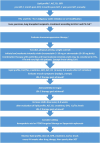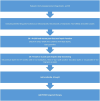Lipid-lowering agents in solid organ transplant recipients
- PMID: 40575919
- PMCID: PMC12394127
- DOI: 10.1093/ndt/gfaf104
Lipid-lowering agents in solid organ transplant recipients
Abstract
Although pre- and post-transplant dyslipidaemia is one of the most prevalent modifiable risk factors associated with an increased risk of major cardiovascular events, it remains underdiagnosed and undertreated. Moreover, the risk of cardiovascular events, acute allograft rejection and vasculopathy associated with dyslipidaemia is underestimated. Although the most prominent underlying cause of dyslipidaemia in solid organ transplant (SOT) recipients is immunosuppressants, their adjustment should be done with caution to avoid an acute graft rejection. Dietary intervention and lipid-lowering therapy (LLT) are needed to lower low-density lipoprotein cholesterol (LDL-C) and triglycerides and to improve the outcomes. Although statins are first-line drugs, non-adherence, interactions with immunosuppressants and the concern related to polypharmacy impact statin use in SOT patients. The evolving evidence on combination therapy with statin and ezetimibe, novel PCSK9 modulators and bempedoic acid indicate that LDL-C can be safely and efficiently reduced with improved adherence. Since SOT patients are complex, a structured multidisciplinary team approach can deliver comprehensive lipid management, improve patient care and prevent potential complications. A call to action is needed for further trials and registries to determine potential benefits of strategy based on initial combination therapy with ezetimibe and a low/moderate dose of statin, as well as novel LLT. Optimal lipid treatment targets in SOT recipients should be determined, depending on the transplanted organ and cardiovascular risk category. We aimed to review current and future management of lipid disorders, propose an algorithm useful in clinical practice and call attention to broader use of novel LLTs along with further studies to assess their impact on clinical outcomes.
Keywords: PCSK9 inhibitors; dyslipidaemia; ezetimibe; solid organ transplantation; statins.
© The Author(s) 2025. Published by Oxford University Press on behalf of the ERA.
Conflict of interest statement
AM received honoraria for lectures from Novartis, Amgen, Sanofi, Sandoz, Krka and Viatris. The remaining authors declare no conflicts of interest.
Figures


Similar articles
-
PCSK9 inhibitors and ezetimibe for the reduction of cardiovascular events: a clinical practice guideline with risk-stratified recommendations.BMJ. 2022 May 4;377:e069066. doi: 10.1136/bmj-2021-069066. BMJ. 2022. PMID: 35508320
-
Prescription of Controlled Substances: Benefits and Risks.2025 Jul 6. In: StatPearls [Internet]. Treasure Island (FL): StatPearls Publishing; 2025 Jan–. 2025 Jul 6. In: StatPearls [Internet]. Treasure Island (FL): StatPearls Publishing; 2025 Jan–. PMID: 30726003 Free Books & Documents.
-
HMG CoA reductase inhibitors (statins) for kidney transplant recipients.Cochrane Database Syst Rev. 2014 Jan 28;2014(1):CD005019. doi: 10.1002/14651858.CD005019.pub4. Cochrane Database Syst Rev. 2014. PMID: 24470059 Free PMC article.
-
Synbiotics, prebiotics and probiotics for solid organ transplant recipients.Cochrane Database Syst Rev. 2022 Sep 20;9(9):CD014804. doi: 10.1002/14651858.CD014804.pub2. Cochrane Database Syst Rev. 2022. PMID: 36126902 Free PMC article.
-
Expert opinion on the integration of combination therapy into the treatment algorithm for the management of dyslipidaemia: the integration of ezetimibe and bempedoic acid may enhance goal attainment.Eur Heart J Cardiovasc Pharmacother. 2025 Jul 7;11(4):367-379. doi: 10.1093/ehjcvp/pvaf007. Eur Heart J Cardiovasc Pharmacother. 2025. PMID: 40052330 Free PMC article. Review.
References
-
- Nelson J, Alvey N, Bowman L et al. Consensus recommendations for use of maintenance immunosuppression in solid organ transplantation: endorsed by the American College of Clinical Pharmacy, American Society of Transplantation, and the International Society for Heart and Lung Transplantation. Pharmacotherapy 2022;42:599–633. 10.1002/phar.2716 - DOI - PubMed
Publication types
MeSH terms
Substances
Grants and funding
LinkOut - more resources
Full Text Sources
Medical
Miscellaneous

